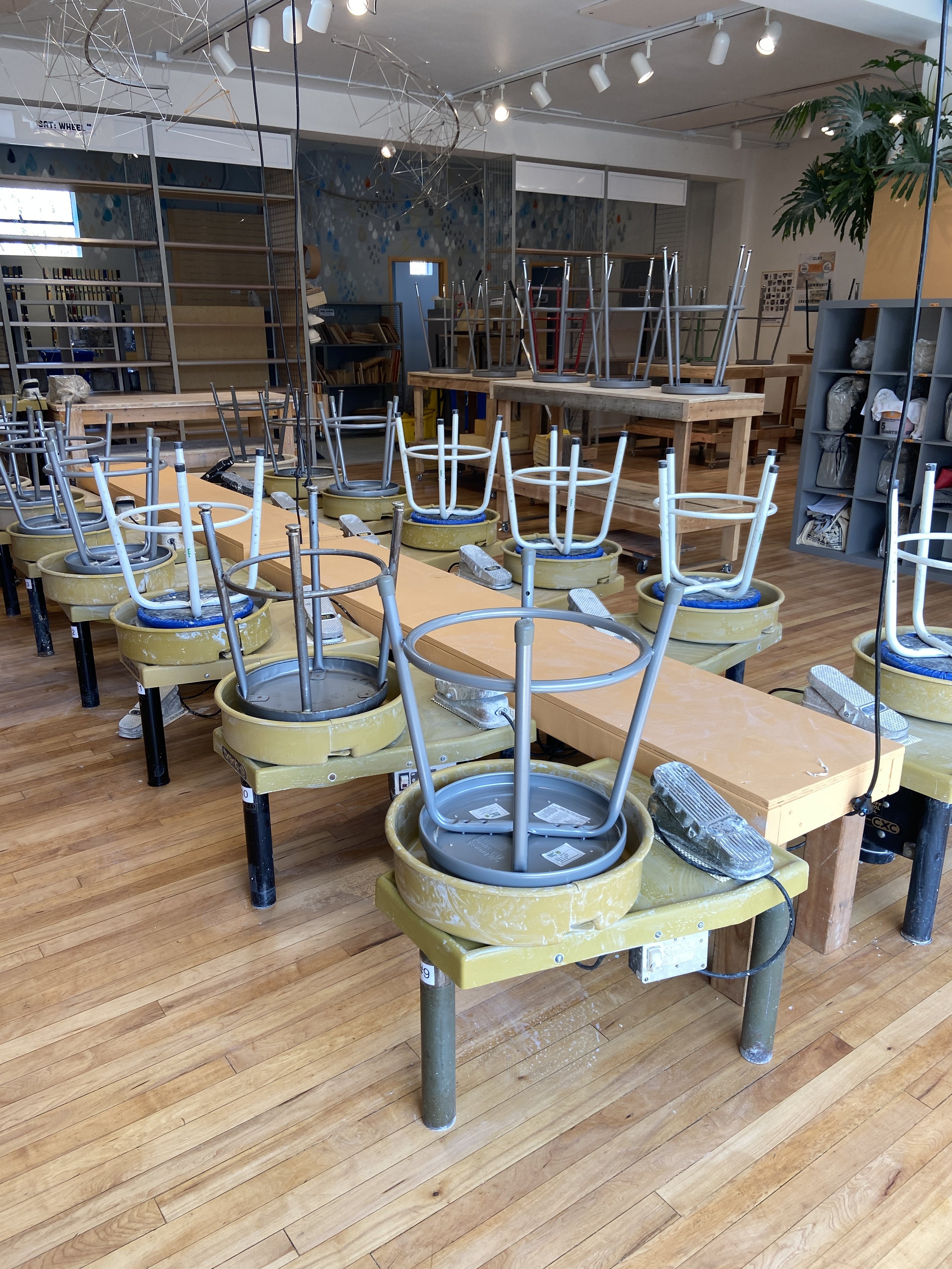Gas Kiln Firing and Kiln Logging Information
Updated 1/20/22 - this material is subject to change
Fill in Kiln Log Information:
Date, Weather, Cones, Name, End Temp
Look at past logs for a schedule of increases
Call Deb 206-673-6454 for any challenges or questions
Lighting the kiln
Make sure you can see your peeps and have written down cones before lighting the kiln
Make sure all the individual burner gas levers are off on before lighting
Start with two burners (kitty corner) on for a bisque/ all 4 for a glaze firing
Use the torch to light the kiln with the kiln door and damper open
Timing
Consistently log the kiln at least every hour or more
Checking the kiln needs to happen regularly to have an accurate “Rate of increase”.
Check past logs to determine how fast to turn up the gas
Gas
Notice the tick marks on the gas gauges. Track gas levels on the log
Gas gauges are not all the same.
The numbers on the gauge equal pounds of pressure
Usually, we turn up the gas in ½ pound increments. Sometimes in full-pound increments
Temperature
Write the Fahrenheit temperature of the kiln
Calculate this from the Multimeter number using the temp chart
Use this to calculate the rate of increase
The Multimeter/pyrometer shows if the temp is going up or down. It is not necessarily an accurate temp reading. Use the cones for the most accurate temp readings.
Compare the color of the kiln and cones to the multimeter to determine accuracy.
Rate of Increase
We want the kiln to increase around 200º an hour or faster after red heat
Sometimes more gas slows the firing down!
Take the most recent kiln check temperature and subtract the last reading temperature. If you are checking the kiln every hour this is your number. If you are checking the kiln every ½ hour, divide this number by 2.
Oxy
For class firings, we want an oxidation or neutral atmosphere in the kiln
Check with the Multimeter with dial on 3 (showing three decimal places)
Switch the dial to 2 (showing two decimal places) if the number is jumping from low to high. Make adjustments to ensure the high number does not exceed the Highest Oxy #.
Temp with Oxygen Numbers. We aim for a low to medium Oxygen Level in a neutral firing.
1290ºF Low .064, Medium .098, High .112
1470ºF Low .070, Medium .108, High .124
1650ºF Low .077, Medium .118, High .135
1830ºF Low .083, Medium .128, High .147
2010ºF Low .090, Medium .138, High .179
2190ºF+ Low .097, Medium .148, High .192
Damper
The damper controls the pull of the chimney on the air in the kiln (draft)
Use the damper to adjust the air the kiln has access to
The kiln is VERY sensitive to changes in the damper
The kiln post over the damper controls the secondary air.
Cones/ Notes
Write cone drops, color of the kiln here, evenness of the kiln,
Shutting off the Kiln
When cone six is getting soft, shut off kiln (before it touches the shelf)
Shut off Main gas first
Shut of each individual burner gas levers next
Push in damper
Make sure peeps are in
Put away Multimeter and kiln log in office
Tips for Firing
Use your senses and be attentive to the kiln
Check the kiln regularly to help create a rhythm and consistency in your notes
Set an alarm and always go check it at the appropriate time
If you have a questions, call/ text Deb - 206-673-6454
We want the kiln to stay in a neutral atmosphere. If in doubt, use less gas or give the kiln more air.
The kiln is very responsive = small changes make a big difference
The damper helps control how much air the kiln has. Pushing it in gives it less air. Pulling it out gives it more air.
If a kiln does not have enough air, it will start reducing.
This will equal higher numbers on the multimeter or a flame coming out the peeps when you check cones.

